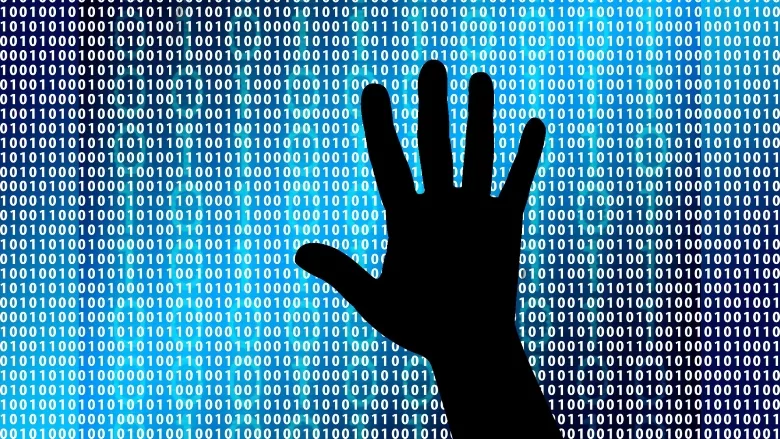AI: Fraudster’s greatest weapon and a company’s greatest defense

Image from Pixabay
Security leaders have all received a phishing attempt before. An email or text from your boss, appearing legitimate at first, asking you to do something out of the ordinary for them — from sending over documents to buying them gift cards. By now, many workers have developed a watchful eye for these attempted scams and can spot one of the many telltale signs of someone trying to defraud them from a mile away. But what if they receive a phone or video call from someone who looks, and sounds, exactly like their boss? How likely is it that they’ll think twice before doing what they ask?
For many employees, the honest answer is “unlikely” — and that’s what fraud actors are counting on, now that artificial intelligence (AI) has worked its way into their toolkits. Though fraud may have previously been a manual effort, often by a network of criminals, the accessibility and power of modern AI models now allow a single actor to execute fraud at a greater scale (and far more convincingly) than ever before, and near-effortlessly at that. From casting a wide net with mass bot attacks to using deepfakes to effectively target individuals, fraudsters now have more powerful tools at their disposal and pose a historic risk to unprepared companies.
Thankfully, they’re not the only ones that can use AI — and while it’s not a “silver bullet” against fraud, AI-powered fraud defense systems are key to thwarting some of the most daunting scam methods to date. Let’s dive a little deeper into what this looks like in practice.
The modern threat landscape, brought to you by AI
Fraud is far from new — having taken a variety of forms throughout recorded history — but the explosion of methods that fraudsters have at their fingertips is, and many of the threats facing businesses and individuals today come courtesy of the newfound pervasiveness of AI. A significant reason for this is the extent to which AI enables fraudsters to take an automated, hands-free approach to pursue their victims, often requiring little to no effort to conduct once the groundwork is laid. Some fraudulent uses for AI, such as AI-powered online template generators for forging ID documents, may not be as individually effective as targeted attacks or custom-made fake IDs – but they don’t necessarily need to be. Even a minuscule success rate still results in free victory for the actors behind them, and allows the schemes to be directed at vastly more potential victims.
However, AI’s dubious potential only grows scarier from there. In many cases, it’s used to probe for weaknesses in businesses’ fraud defenses, seeking out vulnerabilities that a regular person would likely miss; with these tools constantly on the hunt for an unguarded entry point, it’s clear that maintaining a static strategy for warding them off is hardly sufficient in the long run. But in still other cases, it can be used to adapt and impersonate a person’s likeness or voice with remarkable accuracy.
Deepfakes, in their many flavors, are becoming cheap, easy to use, and unsettlingly effective in duping anyone from ordinary consumers to employees with significant internal access; most importantly, they’re quite difficult to filter out without specialized tools to verify identity and liveness. All of the above fraud methods – as well as the myriad other forms AI-powered fraud can take — present a serious threat without a dynamic and adaptable series of defense tools guarding against them. Fraud can happen in any form and at any stage of the customer journey, making single-layer and inflexible defenses insufficient.
Making the double-edged sword work for your business
The good news, however, is that AI isn’t inherently evil: despite its nefarious uses, it can also be employed as a defense against itself. Verifying user identity, for example, can come down to the discernment of minuscule details — whether determining the legitimacy of an ID document or working out if the person on the other end of the line is who they say they are. Even fake IDs used to access restricted sites, or purchase restricted goods, can be checked with an AI-based verification tool much more accurately than a human eye can. With a tool as refined as AI in the hands of criminals, many have found themselves needing to fight fire with fire to stand a chance.
As ironclad as a solid AI-powered defense can be, it’s important to remember that fraudsters are constantly analyzing defense tactics and adapting their attacks to stay one step ahead. As such, it’s essential to keep up with a regularly-updated strategy, as companies that leave theirs to grow stale are sure to fall victim to an iteration of fraud that’s already far surpassed their abilities to catch it. Proactivity is crucial: by the time a fraud shield can be reactively adjusted, the damage will have already been done.
While avoiding scaring customers off with unnecessary friction is critical, it’s equally important to not be scared of introducing a bit of friction for the sake of combatting evolving fraud threats. The key is finding the right point in the customer journey at which to inject it, when to ramp it up, and when to scale it back. The menace of identity fraud is ever-present and ever-changing, but with investments in the right technology, smart use of data and risk signals, and a dynamic approach to fraud prevention, it doesn’t have to impact your business — let alone ruin it.
Looking for a reprint of this article?
From high-res PDFs to custom plaques, order your copy today!




.webp?height=200&t=1727272471&width=200)


